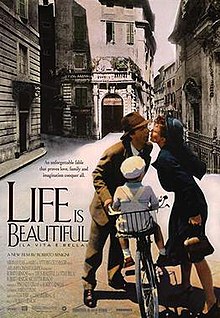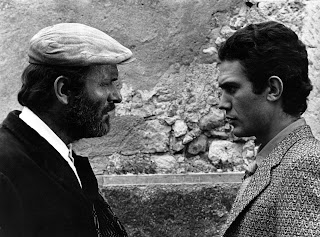Friulian won five medals at a single Winter Games
 |
| Manuela Di Centa in action at the 1994 Winter Olympics in Norway, where she won five medals |
Di Centa made history at the 1994 Winter Olympics in Lillehammer, Norway, when she won a total of five medals, including two golds - the only cross-country skier to accumulate so many medals at a single Games.
Three times Italy’s national fell running champion, Di Centa went on to become the first Italian woman to climb Mount Everest when she scaled the world’s highest peak in 2003, planting the five-ringed Olympic flag at the summit.
A member of the International Olympic Committee from 1999 to 2010, Di Centa has also represented her region as a politician, sitting in the Italian Chamber of Deputies for the Forza Italia and People of Freedom parties between 2006 and 2013.
Born and raised in the beautiful surroundings of the Carnia region of Friuli, Di Centa grew up in a family of Nordic skiers and took to skis almost as naturally as learning to walk.
 |
| Di Centa on her ascent of Mount Everest |
She won her first medals in either competition at the 1991 World Championships on home territory in Val di Fiemme in the Dolomites, when she won silver in the four by 5km relay - alongside Bice Vanzetta, Gabriella Paruzzi and Stefania Belmondo - and individual bronze over 5km and 30km. The 5km relay team repeated their bronze medal success at the Olympics at Albertville in France the following year.
Di Centa pocketed a World Championship 30km silver and a medal of the same colour in the four by 5km relay at Falun in Sweden in 1993 but it was at the Olympics in Lillehammer the following February that she hit her peak.
She medalled in all five cross-country events in which she competed, winning golds over 15km and 30km, silver in the 5km and pursuit, and a second bronze in the four by 5km relay.
No cross-country skier - male or female - has won five medals at a single Winter Olympics before or since. Another relay bronze at the 1998 Games in Nagano in Japan raised her career total Olympic medal haul to seven, after which she announced her retirement from competition.
Her World Championship medal haul was also seven - including four silvers but no gold. She twice won her sport’s prestigious World Cup, finishing first in 15 events all told and being crowned overall champion in 1994 and 1996.
 |
| Di Centa's official photograph as a member of the Chamber of Deputies |
Having revealed that she had two childhood dreams - to compete at the Olympics and to climb the world’s highest mountain - she achieved the latter on May 23, 2003 by becoming the first Italian woman to reach the 8,848m summit of Mount Everest.
She needed supplementary oxygen for the final 1,500m but was determined to complete the climb - 50 years after Sir Edmund Hillary and Sherpa Tenzing Norgay conquered it for the first time in 1953. Di Centa celebrated by planting the Olympic and Italian flags at the summit.
Di Centa has also enjoyed a successful career as a television presenter, mainly in programmes dedicated to her beloved mountains, and successfully ran for election to the Chamber of Deputies in 2006 as a Forza Italia candidate for Friuli-Venezia Giulia, and in 2008 for Trentino Alto-Adige as a member of Il Popolo della Libertá - the People of Freedom.
Married to the mountaineer and cross-country skier Fabio Meraldi, Manuela di Centa is the sister of another Olympic cross-country skiing gold medallist, Giorgio Di Centa, and the cousin of long distance runner Venanzio Ortis, who was European 5,000m champion in 1978.
Giorgio Di Centa won Olympic gold in the 50km and four by 10km events at the Turin Olympics in 2006, where Manuela was one of the flag bearers and, in her role as Italian representative on the IOC, presented her brother with one of his golds.
Manuela and Giorgio’s maternal grandmother, Irma Englaro, served with distinction as a Carnic Porter during the First World War, one of a legion of local women who helped Italy’s war effort along the Carnia front by transporting supplies and ammunition in their back-borne panniers.
 |
| Carnia, the region in which Paluzza is situated, is an area of outstanding natural beauty |
Manuela Di Centa’s place of birth, Paluzza - Paluce in Friulian dialect - is a small town of around 2,200 inhabitants situated about 120km (75 miles) northwest of Trieste and approximately 50km (31 miles) northwest of Udine, in the historic Carnia region of Friuli, close to the border with Austria. It is best known today as a ski resort, famed for its cross-country ski runs, but historically it was a key strategic defensive position where a castle - Castrum Moscardum - was built in the 13th century to guard the valley against invaders from the north. One tower of the castle remains standing today. The valley in which Paluzza sits - the Val Bût or Canale di San Pietro - is one of five that make up the picturesque Carnia region, which includes 27 municipalities. Carnia is thought to take its name from the Germanic Carni tribe who are thought to have migrated south from around 400 BC, reaching the area through the Plöcken Pass.
 |
| The Loggia del Lionello is a feature of Udine's beautiful main square, Piazza della Libertà |
Udine, the nearest city to Di Centa’s home town, is an attractive and wealthy provincial city and the gastronomic capital of Friuli-Venezia Giulia. Udine's most attractive area lies within the mediæval centre, which has Venetian, Greek and Roman influences. The main square, Piazza della Libertà, features the town hall, the Loggia del Lionello, built in 1448–1457 in the Venetian-Gothic style, and a clock tower, the Torre dell’Orologio, which is similar to the clock tower in Piazza San Marco - St Mark's Square - in Venice. The city was part of the Austrian Empire between 1797 and 1866 and retains elements of a café society as legacy from that era, particularly around Piazza Matteotti, known locally as il salotto di Udine - Udine's drawing room. Long regarded as something of a hidden gem, Udine does not attract the tourist traffic of other, better-known Italian cities, yet with its upmarket coffee shops, artisan boutiques and warm, traditional eating places in an elegant setting, it has much to commend it.
Also on this day:
1788: The death of royal exile Charles Edward Stuart
1857: The birth of architect Ernesto Basile
1888: The death of Saint Don Bosco
1925: The birth of fashion designer Mariuccia Mandelli
1933: The birth of Mafia boss Bernardo Provenzano
1942: The birth of actress Daniela Bianchi
1951: Final of the first Sanremo Music Festival




.jpeg)

























